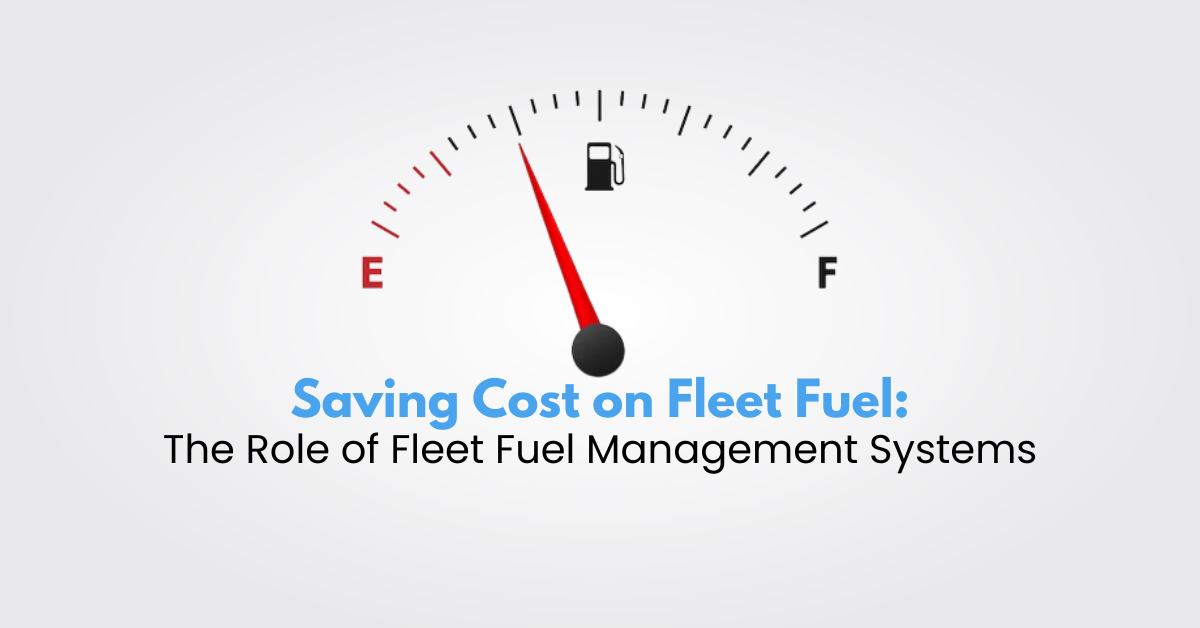Table of Contents
Introduction
Fuel represents a significant expense for any organisation managing a medium to large fleet of vehicles , whether it’s a small delivery service, a large transportation company or a corporate organisation. A vehicle used for operational purposes in an organisation will typically consume a filled tank of fuel for an average of one week .
For instance, filling up an average four-cylinder Sedan car like Toyota Corolla with 2.0 litre engine takes 50-litre fuel . With the current price of N617 per litre of fuel in Nigeria, filling up a single Sedan car would cost an organisation N30,815 ($39) using the current dollar exchange rate of N779 to 1 dollar. This will most likely be carried out every week in a month.
Multiplying the price for a week by the number of weeks in a month, brings the monthly expense for fueling a single car to N123,260 ($158). Replicating that expense for 52 weeks in a year, would bring the cost of fueling one vehicle to N6,409,520 ($8,230). Now, this is for just one vehicle. Let’s say an Organization has 300 vehicles in their fleet, then that would raise the cost of fueling all 300 for a year to N1,922,856,000 ($2,468,998). Depending on the number of vehicles in your fleet and how much fuel they consume, you could be spending more or a little less.
Effective fuel management is crucial for cost control and ensures that the organisation’s fleets are utilised efficiently. Let’s find out how a fleet fuel management system can help you effectively manage your fleet’s fuel costs.
What is Fleet Fuel Management?
Fleet fuel management is simply managing a fleet’s fuel consumption efficiently. Think of it as finding ways to use less fuel while keeping everything running smoothly which is important. It’s all about saving money and reducing your fleet’s impact on the environment. Effective fuel management can help you significantly cut operational costs and lower emissions, contributing to a greener planet.
How Fuel Consumption Is Measured
Fuel consumption is typically measured in kilometres per litre (100km/L). It’s like calculating how many kilometres your car can go on a litre of fuel. A fleet management system provides this data in real-time, making monitoring and improvement easier.
Factors Influencing Fuel Consumption in fleets
Several factors influence fuel consumption, and it is imperative that fleet managers understand these factors. Here are some of the major factors that determine a fleet’s fuel consumption.
Vehicle Type:
Different vehicle types have varying fuel efficiencies. Smaller vehicles are generally more fuel-efficient, while larger, heavier vehicles consume more fuel.
Driving Conditions:
Traffic congestion, frequent stops, and bad roads with gallops and potholes can increase fuel consumption.
Load Weight
Carrying heavier loads requires more fuel to transport, so optimising load capacity to suit the vehicle’s weight is essential.
Driver Behaviour
Unprofessional driver behaviour like harsh braking, harsh acceleration, excessive idling, and overspeeding can significantly increase fuel usage.
Fuel Quality
Poor-quality fuel can decrease fuel efficiency and cause severe damage to the fleet.
Vehicle Maintenance
Regular maintenance ensures that engines operate efficiently as faults or pending repair issues can ultimately lead to increased fuel consumption.
Fuel Theft
Certain dishonest staff sometimes divert fuel meant for the organisation’s fleet for their personal use, which leads to the organisation spending more on fueling costs.
Unauthorised Trips
Fuel management systems like Instanta fleet management software, offer comprehensive tools that allow organisations to monitor, control, and optimise fuel consumption. They offer fleet managers insights and reports to help them make informed decisions thereby reducing cost, improving fleet efficiency, and reducing impact on the environment.
It is not uncommon for staff to use the organisation’s official vehicle for unauthorised personal trips, hence increasing the organisation’s fleet fueling and maintenance cost.

How to monitor fleet fuel consumption
So, how do you keep an eye on how much fuel your fleet is using? This is where fleet fuel management systems step in. These systems use a combination of hardware (like GPS trackers and fuel sensors) and software to provide real-time data on fuel levels, consumption rates, and vehicle locations. They give you the power to track each vehicle’s performance and identify any fuel-wasting behaviours.
What does a Fuel Management System do?
Using a Fleet management system like the Instanta fleet management software offers the fleet manager leverage and detailed insight into the fleet’s consumption rate and the activities that contribute to increased consumption. The fleet manager can in turn use these details to proffer solutions that will ensure fuel efficiency on the fleets. The Instanta fleet management software typically offers the following fuel management solutions to aid fleet managers reduce high fuel consumption problems;
Control movement of Vehicles
It is not uncommon for staff to use their company assigned vehicle for personal unauthorised trips. Some use these vehicles for picking up kids from school, and attending services or functions not approved by the organisation while some even go as far as travelling long distances thereby increasing the organisation’s fueling cost. Organisations often lose an average of 25% of their fuel consumption to staff personal trips.
The Instanta fleet management software curbs these excesses as fleet managers can monitor the movement history of the organisation’s vehicles, create geofences & POI and track the fleet’s realtime location, mileage covered, and the quantity of fuel consumed per trip.
This allows the fleet manager to know if the organisation’s vehicle has been used for activities outside approved ones and the defaulting staff can be penalised to serve as a deterrent to others who might want to engage in such activities thereby saving the organisation over 25% of expenses in fuel cost.
Monitor Fuel trends
Using fuel vouchers, fleet managers can track fuel issuance to know how much is spent on fueling and easily monitor trends to detect and eliminate fuel fraud. Fleet managers can easily see litres consumed per kilometre by a vehicle and how much fuel each vehicle in the organisation’s fleet consumes within a time period.
With this feature, fleet managers can know which vehicles consume more fuel, and spot unwarranted increases in fuel consumption which might be due to a vehicle being faulty or fuel theft from the staff or driver assigned to the vehicle.
Vehicle Maintenance Alerts
With Instanta fleet management system, fleet managers will receive alerts to prompt preventive maintenance on vehicles to avoid issues that can significantly impact fuel efficiency, thereby reducing costs in the long run.
Route Optimization
Using the GPS and route planning feature, fleet managers can optimise routes for fleets to avoid traffic congestion, frequent stops, and bad roads with gallops and potholes which can increase fuel consumption. This limits the vehicle’s idling time as fleet vehicles will have less stops and breaches before arriving at the proposed location.
Driver Accountability
The Instanta fleet management software allows fleet managers to receive notifications for bad driving behaviours and to objectively carry out driver performance evaluations and incentives for fuel-efficient behaviour. Excessive driver behaviours like over-speeding, harsh driving, harsh acceleration and excessive idling which increases fuel consumption can be monitored and controlled to improve the fleet’s fuel efficiency.
Fuel Drain and Refill alert
Fleet managers can receive instant alerts via email and SMS in the event of fuel drain or refill. This allows fleet managers to have a better idea of how much fuel cost the organisation will likely incur.
However, if none of these options seem viable to your fleets, we suggest you try this other fuel management option offered by Instanta Fuel Management. Listed below are the options, along with their advantages and disadvantages so as to let you make an informed decision on which best suits your fleet’s needs.

Automatic calculation of expected fuel consumption per trip
This option helps calculate the expected fuel consumption for each trip based on the distance covered by the vehicle and the documented fuel consumption rate of the vehicle. e.g if a vehicle is documented to cover 6 km with 1 litre of fuel, and then the vehicle covers 100km within a period, the system calculated and reported fuel consumption will be 16 litres.
Advantage
- This is a cheaper solution to implement as it does not require the installation of any additional add-on device or fuel tank calibration.
- The fuel consumption value reported is a guide to compare the expected fuel consumption with the actual consumption based on the money given to the driver or the fuel bought by the driver for the trip or duration covered.
- This solution is suitable for all vehicles and can effectively reduce fuel theft.
Disadvantage
- It does not report the current fuel level in the vehicle
Fuel tank calibration using analog fuel sensor
This is the most common fuel management solution offered in Nigeria. It involves manually calibrating the vehicle fuel tank to obtain the fuel level.
Advantages
- This solution captures and reports the estimated fuel level of the vehicle
- It also captures events such as fuel purchases and fuel theft.
Disadvantages
- Tank calibration option with the tracker’s inbuilt analog fuel sensor is generally known to be inaccurate and inconsistent i.e between 60 % – 75%.
- The inaccurate fuel level report can lead to false reports and wrong management decisions such as wrongly penalising the drivers for fuel theft.
- It is difficult to implement.
- It is not suitable for all vehicles as some do not have analog fuel sensors.
CAN / OBD
This is regarded as the most accurate and reliable fuel monitoring solution. It involves the installation of an additional device, which connects to the vehicle’s onboard computer to obtain and report the real-time fuel level and fuel consumption of the vehicle.
Advantages
- It reports the exact and accurate tank fuel level and fuel the vehicle consumes (100%).
- It reports the accurate fuel drop into the vehicle (filling) and fuel taken out the vehicle (draining).
- It does not require calibration.
- It captures and reports other valuable information such as the exact vehicle mileage (odometer), seat belt status etc.
Disadvantages
- It is expensive to implement because of the need to procure additional devices.
- It is not supported by all vehicles.
Fuel level sensors
Fuel Level sensors are devices mounted onto the fuel tanks of vehicles, typically vehicles with external tanks e.g. trucks, to monitor fuel levels in the tank. It can accurately report the real-time fuel level in these tanks and detect fuel drain and filling events.
Advantages
- It reports the accurate fuel level in the tank.
- It reports fuel filling and draining events
Disadvantages
- Cost of implementation is high because of the need to procure the fuel level sensor
- Installation requires tank drilling and calibration which is intrusive and labour intensive.
Conclusion
Effective fuel management for fleets requires a combination of technology, better driver habits, and data analysis. With the right fuel management system in place and a commitment to continuous improvement, fleet managers can achieve significant cost savings on fleets. By monitoring fuel consumption, implementing fuel-saving strategies, and understanding the factors influencing consumption, fleet managers can steer their fleets operations toward a more efficient and sustainable future.





















